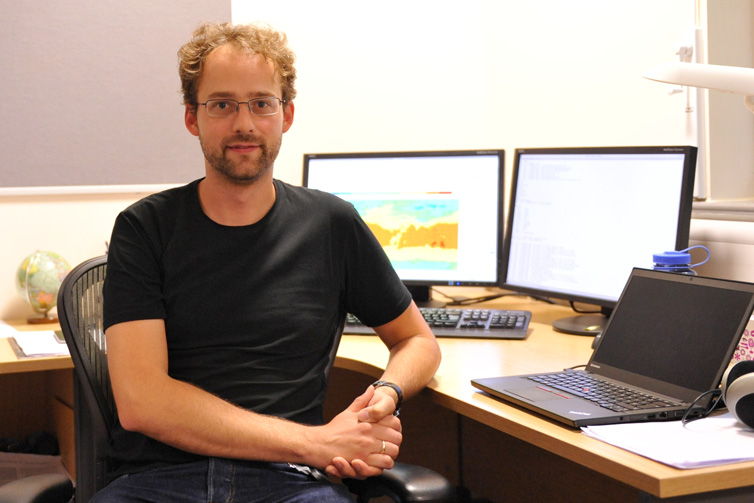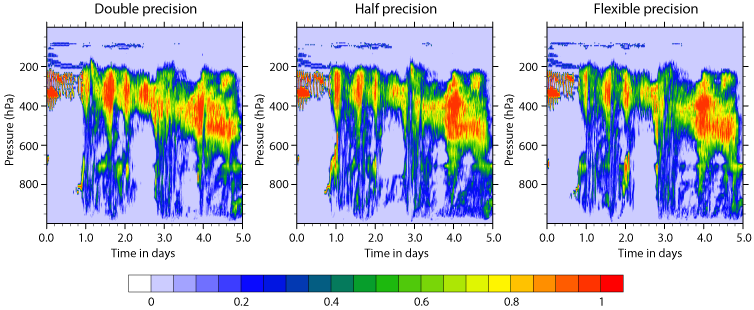

The Royal Society has awarded ECMWF scientist Peter Düben a prestigious University Research Fellowship, which starts in October.
The five-year fellowship is intended for outstanding early-career scientists who have the potential to become leaders in their field.
Dr Düben will explore the sources and propagation of uncertainty in the modelling of Earth system processes. The results will help to reduce unnecessary precision in Earth system modelling in order to increase computational efficiency.
The project builds on research Dr Düben carried out as a postdoctoral researcher in Professor Tim Palmer’s group at the University of Oxford and since October 2016 at ECMWF.
“The goal is to develop this work to a point where it can make a real difference in operational numerical weather prediction,” he says.
Understanding model uncertainty
Earth system processes that are relevant to numerical weather prediction (NWP) are complex. Modelling their evolution inevitably comes with a degree of uncertainty.
The size of the uncertainty depends on many factors. One of Dr Düben’s goals is to pin down precisely when and where in the model the uncertainty is particularly large.
“This project will develop a software tool that will make it possible to track uncertainties from different sources through the models that are used to make weather and climate predictions, thus enabling a reliable description and quantification of uncertainty in predictions,” he says.
Such an analysis has a range of benefits: it can show modellers where they should focus their efforts to reduce model uncertainty; it can improve our understanding of atmospheric dynamics by highlighting connections between different Earth system components; and it can show where unnecessary precision in our calculations can be reduced.

The charts show the cloud fraction of a cloud-resolving model calculated in double precision, half precision for most of the calculations, and flexible precision levels. The results are virtually indistinguishable in terms of model quality but the reduced-precision simulations are much cheaper to run.
Reducing precision
The link between uncertainty and precision is simple: if, for example, the uncertainty in a forecast of the temperature in London in two days’ time is more than 1°C, there is no reason to calculate the predicted temperature to a precision of 15 decimal places.
However, this is what is typically done in today's models, using precious computational resources.
“The same resources could be used to improve the modelling of Earth system processes, for example by increasing the resolution and model complexity, or by running a greater number of simulations,” Dr Düben explains.
He aims to modulate the precision in calculations in accordance with the degree of uncertainty that is associated with the particular processes that are being modelled.
“That way we’ll be able to maximise computational efficiency without any loss in the model’s predictive power.”
Continued progress in NWP depends on substantial efficiency gains as well as growing computing capabilities. Dr Düben’s work will feed into ECMWF’s Scalability Programme, which aims to achieve the required gains across the entire NWP processing chain.
